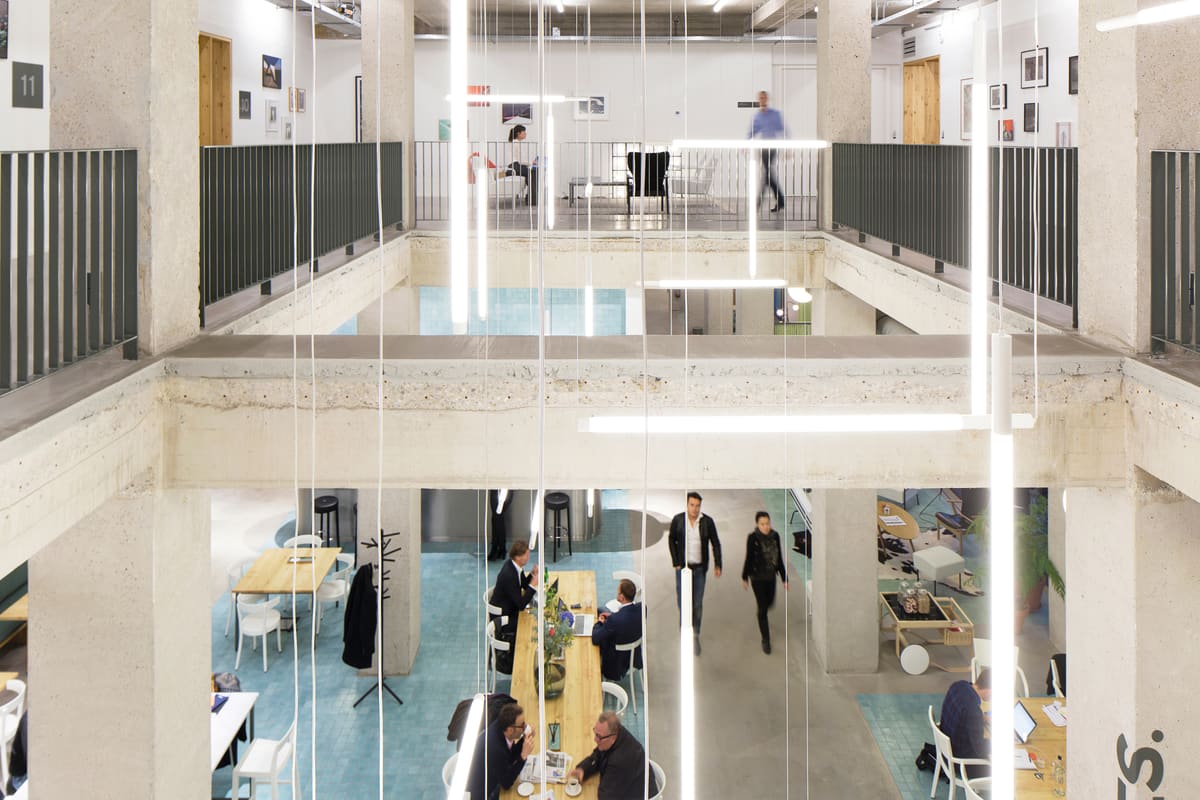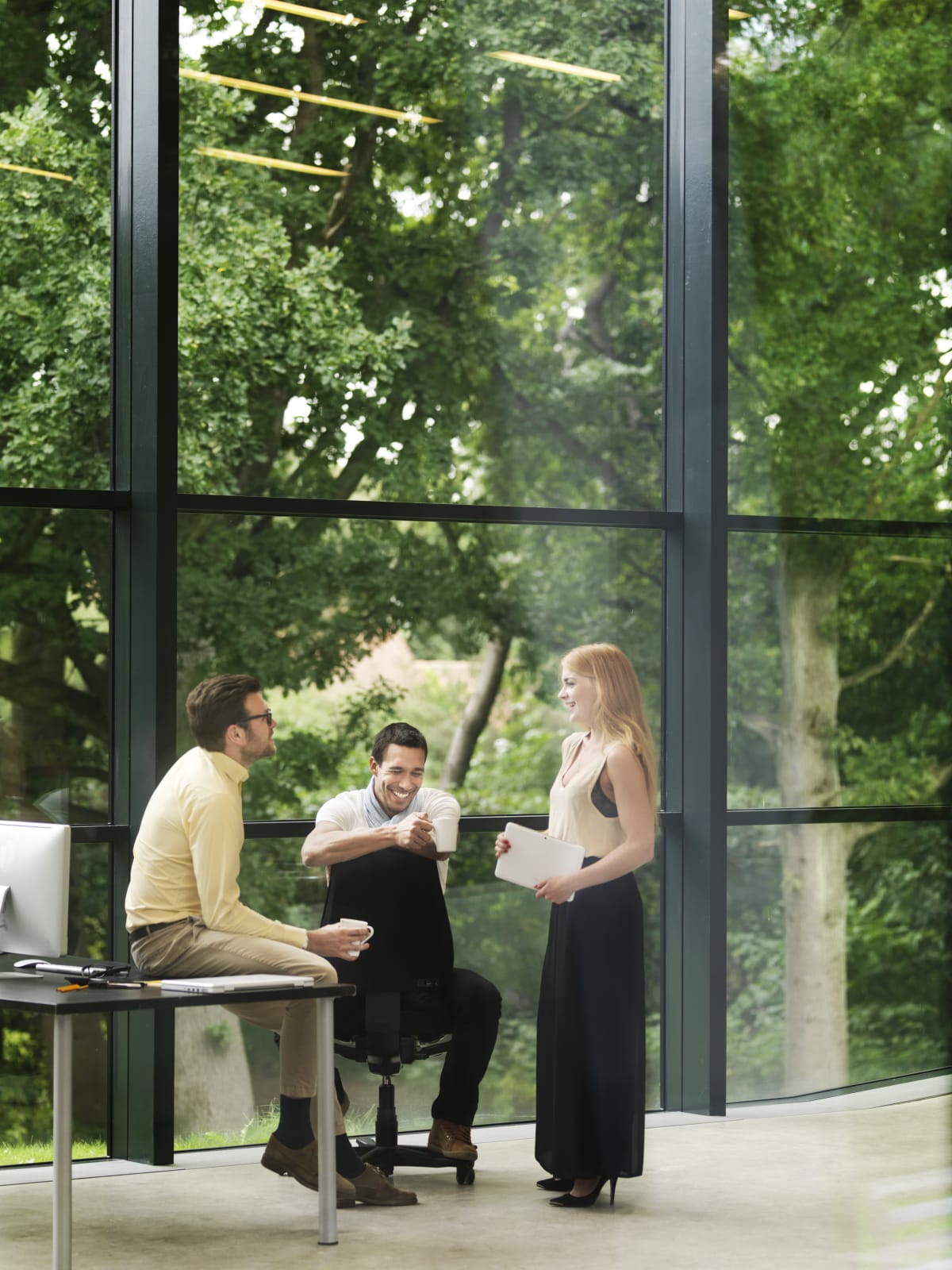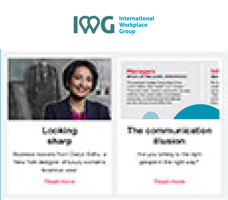Businesses of all kinds are embracing the hybrid approach, locking in its benefits for people, profits and the planet.
The events of the last 18 months, including the 'stay at home' mandates that have seen many of us based in spare bedrooms or at kitchen tables during periods of lockdown, have paved the way for the widespread adoption of hybrid working. And with businesses now awake to its benefits, it seems unlikely that we'll go back to our pre-pandemic routines.
IWG Founder and CEO Mark Dixon recently told City AM that, “With the right infrastructure and technology, employees can be productive no matter where they are.” He points out that IWG has been at the forefront of the hybrid office concept for years, championing a model of work that frees employees to spend some of their time working from home, some in a local office or flexible workspace and some at their company’s central HQ.
“Now, as a result of the pandemic, we’re seeing businesses of all sizes recognise the benefits of this model,” says Dixon. “We’ve seen record demand for full network deals, where clients’ employees have access to any of our locations globally. This has already driven an increase of more than a million people using our network over the last year, with another million committed to do so in the months ahead.”
According to Dixon, “We’ve been witnessing the decline of full-time office work right across the world since long before the Covid-19 pandemic began.” In his view, there are three key reasons for this shift to the hybrid model.
Better for people
First and foremost, Dixon argues, hybrid working has clear benefits for people. “For employees, the time saved on commuting to and from work every day is better spent seeing friends and family, exercising, or covering childcare. As a result, workforces have the potential to be healthier and happier.”
A work base closer to home is a long-term priority for workers, Dixon says: “They want to continue with the reduced commute and increased family time they have experienced in 2020 and into 2021.”
It’s no surprise, then, that IWG’s latest research found 77% of employees say a base closer to home is a must-have benefit that will inform future job applications. Around half of all employees went even further, saying they would look for another job if they were asked to return to the office five days a week.
Many businesses are already reconfiguring their use of real estate, with firms such as HSBC, BP and JP Morgan planning to significantly shrink their office footprints. Dixon predicts that, in tandem with this, businesses will bring workspaces closer to where their employees live, empowering them to work flexibly. “High-quality local workspaces will spring up in communities across the world – not only in city centres, but also in the suburbs and rural areas.” These will allow workers to work near home (‘WNH’), rather than from home, when it suits them.
While the corporate HQ still has a part to play in the new world of work, its role will change. “Hybrid working means that when colleagues do come together it will be for collaboration,” Dixon says. “So it’s important to design spaces that are inviting and flexible, where people can be creative.”
“In short,” Dixon explains, employees’ demand for hybrid working means “fewer and fewer companies need office space that is just a sea of desks.”
Better for profits
In itself, this change in companies’ needs could yield significant savings in the long term. “Companies are rapidly realising the benefits of the ‘hub-and-spoke’ model for office space,” says Dixon. “Instead of one large and expensive city-centre space, we are seeing more clients looking for a smaller central HQ that’s supported by other offices located closer to where employees live.”
Partnering with flexible workspace provider IWG involves less commitment and less expense than leasing a local office network bit by bit. The scalability of flexspace is another key benefit: businesses can increase or decrease their space at short notice, depending on how much is needed.
“Some companies are currently locked into leases,” Dixon explains. “But when these expire, these clients are increasingly set to make the shift into more flexible hybrid space.”
Hybrid working is also empowering employers to recruit and retain the best people regardless of geographic location, Dixon says. This broadening of the talent pool will make firms more competitive and successful in the long term.
Finally, says Dixon, there’s a question of “enlightened self-interest” at play when it comes to the relationship between hybrid working and the bottom line: “A better work-life balance makes for happier, more engaged and productive employees who will stay with a company for longer.”
Furthermore, a study by EY shows that companies can save about $11,000 for each employee that works in a hybrid manner. Not only are cost savings promised by a reduction in staff turnover, but having fewer people at the HQ every day and cutting overheads accordingly can pay dividends.
Better for the planet
The third reason why the hybrid approach is being widely adopted – with firms as diverse as Google and Barclays Bank now committed to it – is that it’s a sure-fire way to bolster a business’s sustainability goals.
That hybrid working is better for the environment is “an obvious fact,” insists Dixon. “Commuting is the single biggest contributor to carbon emissions globally, so cutting long commutes by car or train can make a significant difference.”
However, he argues, “This doesn’t mean that people should be restricted to working from home. The key is to reduce the commute by ensuring people have everything they need closer to home. Hybrid working can help to deliver this concept – commonly known as ‘the 15-Minute City’.”
The brainchild of Professor Carlos Moreno of the Sorbonne, the 15-Minute City is an ideal that’s already inspiring policy-makers around the world, from Brighton to Detroit. It’s an approach to planning that involves ensuring offices, retail and other facilities are close to residences so that interlocking, self-sustaining neighbourhoods can be formed – enabling people to access whatever they need on foot or by bicycle in a quarter of an hour or less.
“IWG has already seen record growth this year,” says Dixon. “Importantly, this growth includes rapidly increasing demand for workspaces in the heart of communities, close to where employees live.”
He adds that “2020 really hit the accelerator” on CEOs’ readiness to embrace the hybrid model, and argues that the pandemic will have lasting effects on the way we live and work. “Hybrid working is the future,” Dixon concludes. “And it’s coming to life around us right now.”
IWG has been helping businesses like yours with corporate flexspace solutions for the last 30 years. Find out how we can support you today.






